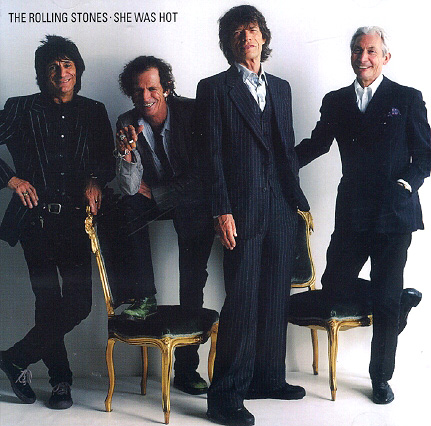Psychology: Is an applied and academic field that studies the human mind and behavior.Research in psychology seeks to understand and explain thought, emotion and behavior. Applications of psychology include mental health treatment, performance enhancement, self-help, ergonomics and many other areas affecting health and daily life.
- I think, that psychology is a way to understand and explain the way that we behave with the people and the world as a whole.-
Application of psychology: Psychology has its application in problems that emerge in almost all areas of social life. For example, psychologists advise institutions and agencies as diverse as the courts or big business. Below is a brief summary of the three main areas of applied psychology, industrial psychology, educational psychology and clinical psychology.
-Industrial psychology-Psychologists carry out different duties in business organizations and places of work: the personnel department or human resources, advice for recruiting and selecting staff, conducting interviews and tests to candidates in developing training and maintaining a good working environment, others research to marketing departments (marketing) and advertising companies, or directly to these agencies and, finally, are also dedicated to investigate the methodical organization of work and put the equipment or work spaces adapted to the needs and potential users.
-Educational Psychology-
The educational psychologists work in the problems of teaching and learning, for example, investigate new methods for teaching children to read or solve math problems in order to make school learning more effective.
-Clinical Psychology-
Many psychologists work in hospitals, clinics and private practice, using different types of therapies to people who need psychological help. They are responsible to interview and examine patients and perform non-medical treatments (with drugs) or surgical (with operations).
Schools of psychology:
From the late 1800's until the 1930's, psychologists were divided about what they should study and how they should study it. Three major schools developed. These schools were
(1) Structuralism
(2) Behaviourism
(3) Psychoanalysis.
Structuralism grew out of the work of James, Wundt, and their associates. These psychologists believed the chief purpose of psychology was to describe, analyse, and explain conscious experience, particularly feelings and sensations. The structuralists attempted to give a scientific analysis of conscious experience by breaking it down into its specific components or structures. For example, they identified four basic skin sensations: warmth, cold, pain, and pressure. They analysed the sensation of wetness as the combined experience of cold and smoothness.
The structuralists primarily used a method of research called introspection. In this technique, subjects were trained to observe and report as accurately as they could their mental processes, feelings, and experiences.
Personalities of structuralism: Wilhelm Wundt , Titchener -,Franz Brentano ,Husserl , Oswald Külpe , Hermann Ebbinghaus, Edward Titchener, William James, Carl Lange, Harvey Carr, Hall ,Cattell ,Dewey, Angell , Carr ,Gauss ,Jacques Quételét , Francis Galton ,Cattell ,Alfred Binet, Simon ,Lewis Terman , William Stern,Thurstone.
 |
| William James |
 |
| Wilhelm Wundt |
Behaviourism: was introduced in 1913 by John B. Watson, an American psychologist. Watson and his followers believed that observable behaviour, not inner experience, was the only reliable source of information. This concentration on observable events was a reaction against the structuralists' emphasis on introspection. The behaviourists also stressed the importance of the environment in shaping an individual's behaviour. They chiefly looked for connections between observable behaviour and stimuli from the environment.
The behaviourist movement was greatly influenced by the work of the Russian physiologist Ivan P. Pavlov. In a famous study, Pavlov rang a bell each time he gave a dog some food. The dog's mouth would water when the animal smelled the food. After Pavlov repeated the procedure many times, the dog's saliva began to flow whenever the animal heard the bell, even if no food appeared. This experiment demonstrated that a reflex--such as the flow of saliva--can become associated with a stimulus other than the one that first produced it--in this case, the sound of a bell instead of the smell of food. The learning process by which a response becomes associated with a new stimulus is called conditioning.
Watson and the other behaviourists realized that human behaviour could also be changed by conditioning. In fact, Watson believed he could produce almost any response by controlling an individual's environment.
During the mid-1900's, the American psychologist B. F. Skinner gained much attention for behaviourist ideas. In his book Walden Two (1948), Skinner describes how the principles of conditioning might be applied to create an ideal planned society.

Psychoanalysis: was founded during the late 1800's and early 1900's by the Austrian doctor Sigmund Freud. Psychoanalysis was based on the theory that behaviour is determined by powerful inner forces, most of which are buried in the unconscious mind. According to Freud and other psychoanalysts, from early childhood people repress (force out of conscious awareness) any desires or needs that are unacceptable to themselves or to society. The repressed feelings can cause personality disturbances, self-destructive behaviour, or even physical symptoms.
Freud developed several techniques to bring repressed feelings to the level of conscious awareness. In a method called free association, the patient relaxes and talks about anything that comes to mind while the therapist listens for clues to the person's inner feelings. Psychoanalysts also try to interpret dreams, which they regard as a reflection of unconscious drives and conflicts. The goal is to help the patient understand and accept repressed feelings and find ways to deal with them.
Modern psychology has incorporated many teachings of the earlier schools. For example, though many psychologists disagree with certain of Freud's ideas, most accept his concept that the unconscious plays a major role in shaping behaviour. Similarly, most psychologists agree with the behaviourists that environment influences behaviour and that they should study chiefly observable actions. However, many psychologists object to pure behaviourism. They believe that it pays too little attention to such processes as reasoning and personality development.














